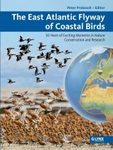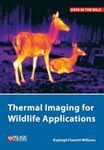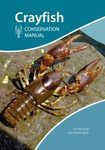Report
By: Lucy Haskell(Author), Patricia Zurita(Foreword By), Mette Skov(Foreword By)
87 pages, colour photos, colour illustrations, colour tables
![State of the World's Birds 2022 State of the World's Birds 2022]()
Click to have a closer look
About this book
Customer reviews
Related titles
About this book
This fifth edition of State of the World’s Birds summarises what birds tell us about the state of nature, the pressures upon it, and the solutions in place and needed. It focuses on birds because they are an excellent barometer for planetary health. Being widely distributed, relatively easy to survey, and responsive to environmental change, birds are useful biodiversity indicators, revealing wider trends in natural ecosystems. Owing to the cultural significance and enduring popularity of birds, there is an army of birdwatchers collecting data on them. BirdLife began documenting the status of birds and the threats to them exactly 100 years ago. Birds are therefore better known than any comparable group of organisms.
This wealth of information paints a deeply concerning picture. One in eight bird species is threatened with extinction, and the status of the world’s birds continues to deteriorate. The pressures causing these losses of our natural heritage are well understood, and the vast majority are driven by human actions. Fortunately, we know what actions are needed to reverse these losses and to help nature to recover.
Key threats to the world’s birds require mitigation, including preventing overexploitation and illegal killing of birds, managing invasive alien species, tackling fisheries bycatch, and minimising the negative impacts of energy infrastructure. Many threatened species also require targeted recovery actions such as captive breeding and release, translocation, supplementary feeding and other species-specific interventions.
Underpinning these responses are the need to mainstream biodiversity across all sectors of society, including accounting for the full value of nature in terms of the benefits that it provides to people, raising awareness and supporting education, and promoting effective policies and legislation that are comprehensively implemented. Adequate monitoring systems are essential to allow us to track progress.
Birds provide reasons for hope and show us that conservation action works. There are many examples of species being saved from extinction, populations recovering, threats being effectively managed and ecosystems being restored. However, time is running out. The next decade is critical if we are to stop unravelling the fabric of life and destroying our global safety net. Governments must adopt a Global Biodiversity Framework with ambitious commitments to ensure transformative change and urgent implementation of action. The future of the world’s birds and ultimately our own species depends upon it.
Customer Reviews
Report
By: Lucy Haskell(Author), Patricia Zurita(Foreword By), Mette Skov(Foreword By)
87 pages, colour photos, colour illustrations, colour tables






































![Aves Acuáticas en los Humedales de Cuba [Waterfowl of the Wetlands of Cuba]](http://mediacdn.nhbs.com/jackets/jackets_resizer_medium/16/161540.jpg?height=150&width=99)

